Important
You are browsing upcoming documentation for version 7.0 of OroCommerce, scheduled for release in 2026. Read the documentation for the latest LTS version to get up-to-date information.
See our Release Process documentation for more information on the currently supported and upcoming releases.
Configure Checkout Workflow in the Back-Office
Hint
This section is part of the Checkout Configuration Concept Guide topic that provides a general understanding of single-page and multi-page checkout concepts.
Overview
The Checkout workflow represents a standard checkout procedure in the eCommerce environment. It is a system workflow that defines the sequence of steps and transitions that a user can go through when creating an order in the storefront.
To reach the workflow:
Navigate to System > Workflows in the main menu.
On the page of all workflows, you can perform the following actions for the Checkout workflow:
View the workflow:
Deactivate / Activate the workflow: /

Click Checkout to open the flow.
On the Checkout workflow page, you can perform the following actions:
Deactivate the workflow - click Deactivate to deactivate the workflow.
Activate the workflow - click Activate to activate the workflow.

Steps and Transitions: Illustration
As an illustration, we are going to proceed through the steps of the Checkout workflow in the default OroCommerce storefront.
Several items have been added to a shopping list in the OroCommerce storefront. To proceed to the checkout, click Create Order.
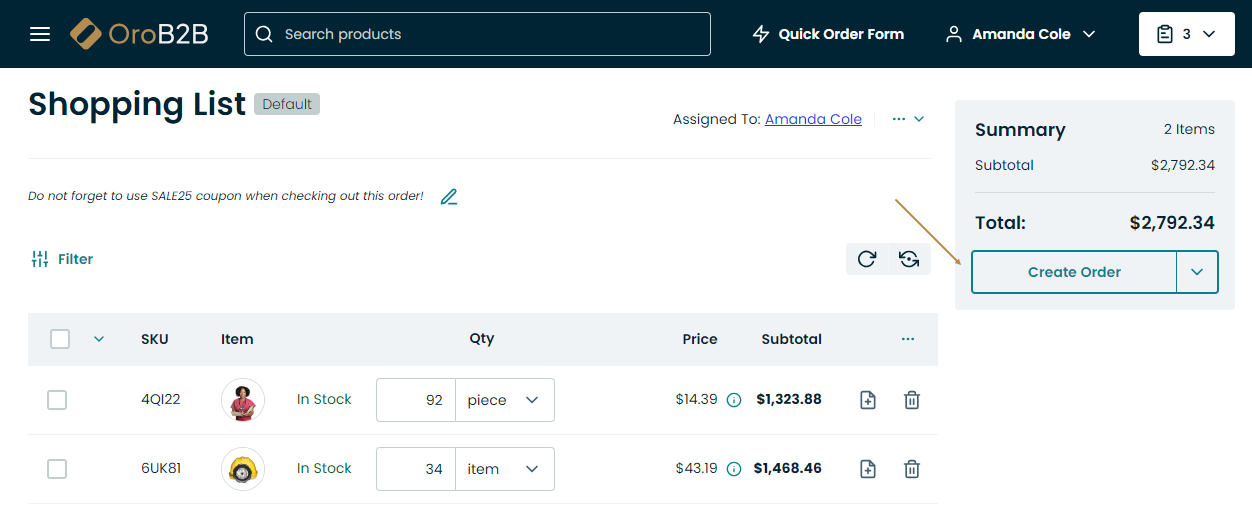
Note
The Create Order button is available if the following conditions are met:
At least one shipping method is available
At least one payment method is available
There is at least one product with a price in the shopping list
Items to be purchased are available in the inventory in the back-office
A warning message is shown if for some reason you are unable to start the checkout process.
Step 1: Agreements
At the Agreements step, you are required to accept all mandatory consents to process your personal data, if such consents have not been accepted previously. Keep in mind that if you leave the checkout after accepting a mandatory consent, this consent is considered accepted and can be revoked only through the profile management.
Important
Keep in mind that for the Agreements section to be displayed in the checkout, you need to add the necessary consents to the list of enabled consents in the system configuration.

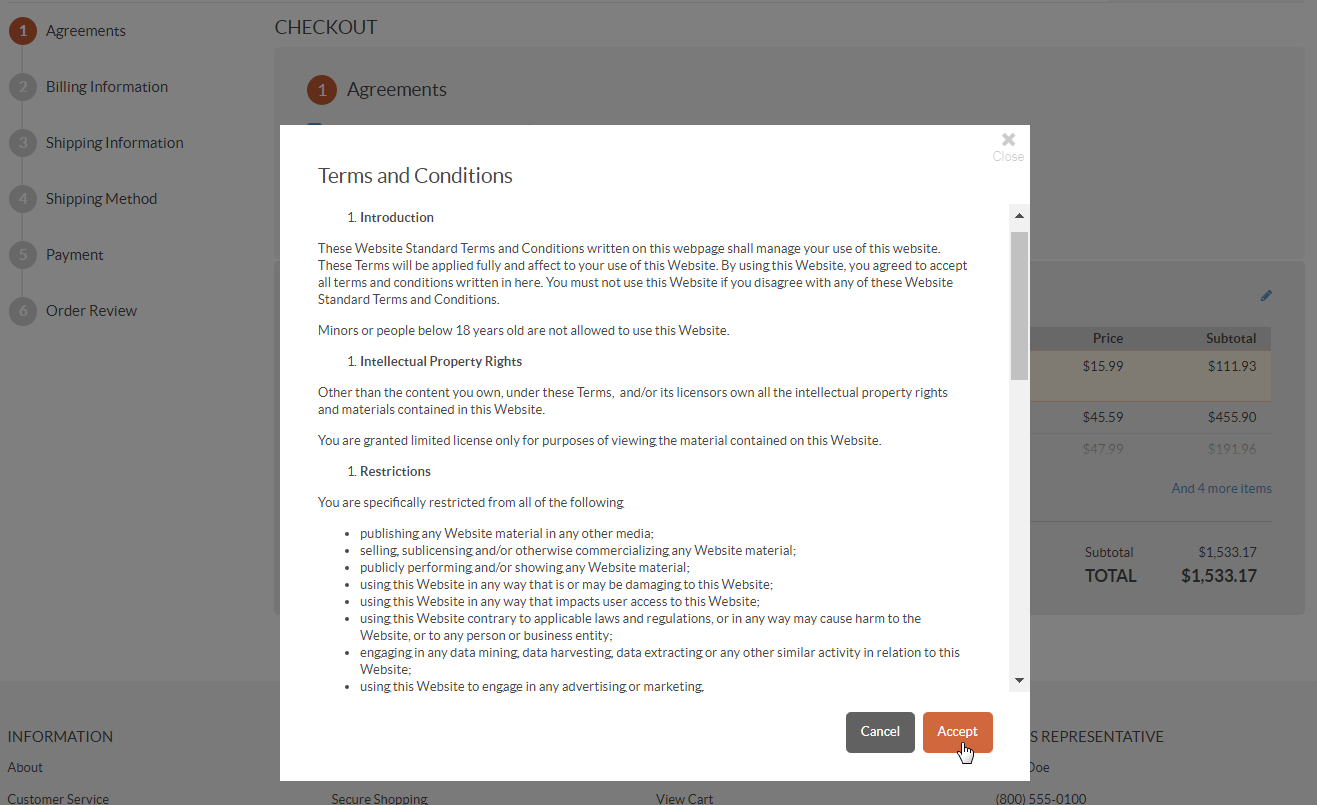
Once the consent is accepted, click Continue to proceed with the checkout.
Step 2: Billing Information
The checkout is now open. The next step is to enter billing information for the order by selecting an existing address from the address book, or creating a new one.
Checking Ship to this address allows you to use the provided billing address as shipping.
Clicking Continue redirects you to the next step.
Note
You can edit the already provided information (until the order is submitted) by clicking on the left side of the page.
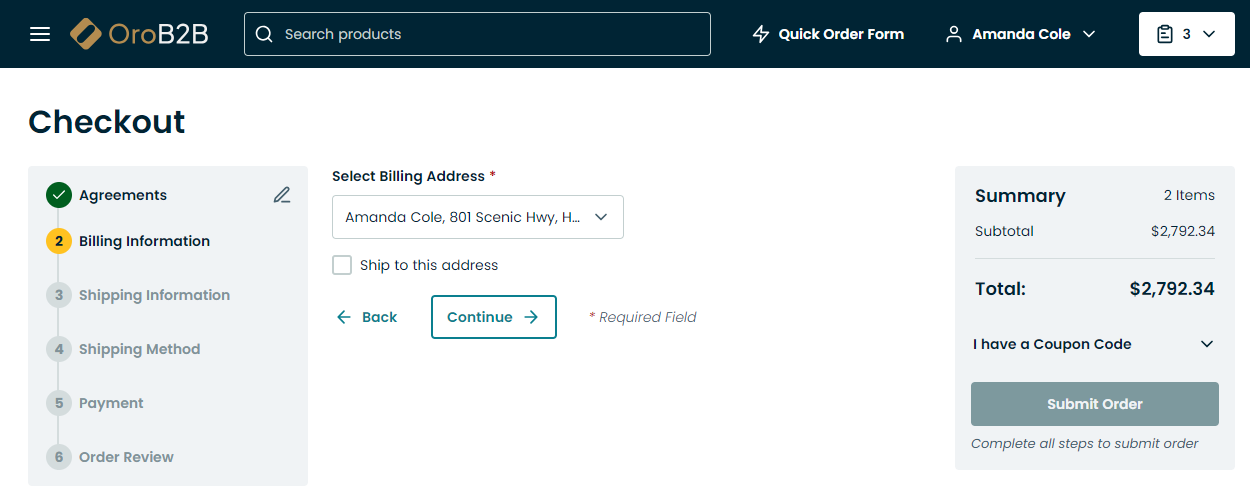
Step 3: Shipping Information
If the Ship to this address box has been checked at the Billing Information step, the provided address is automatically selected at the Shipping Information step.
To edit shipping information, clear the Use billing address box and provide a different shipping address for the order.
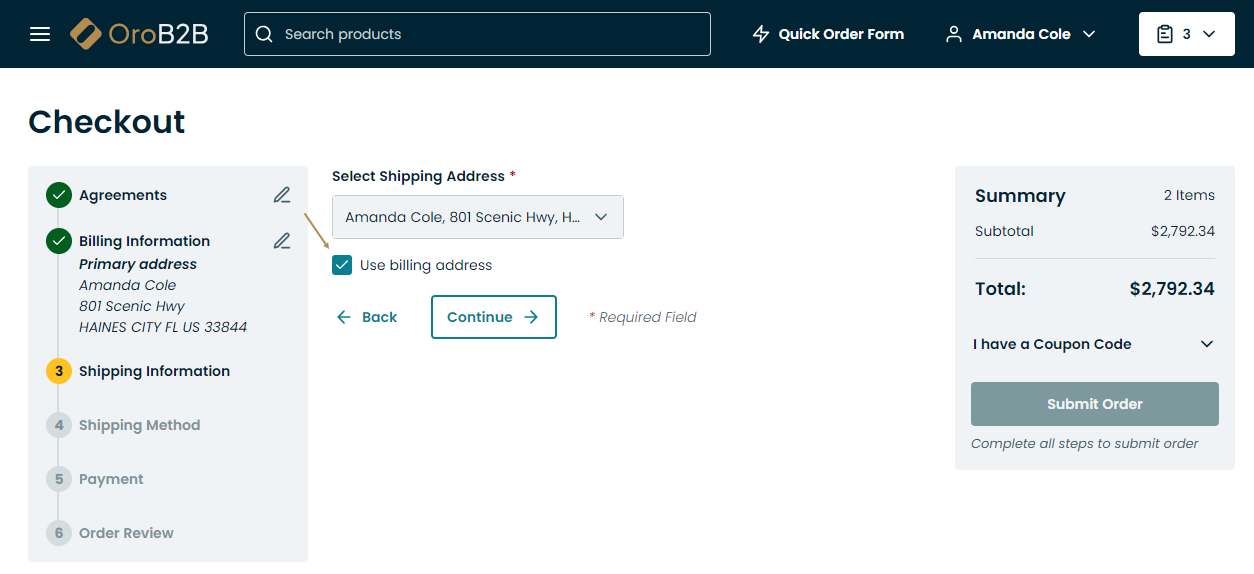
Step 4: Shipping Method
Provide a shipping method by selecting one from the list of the available methods.
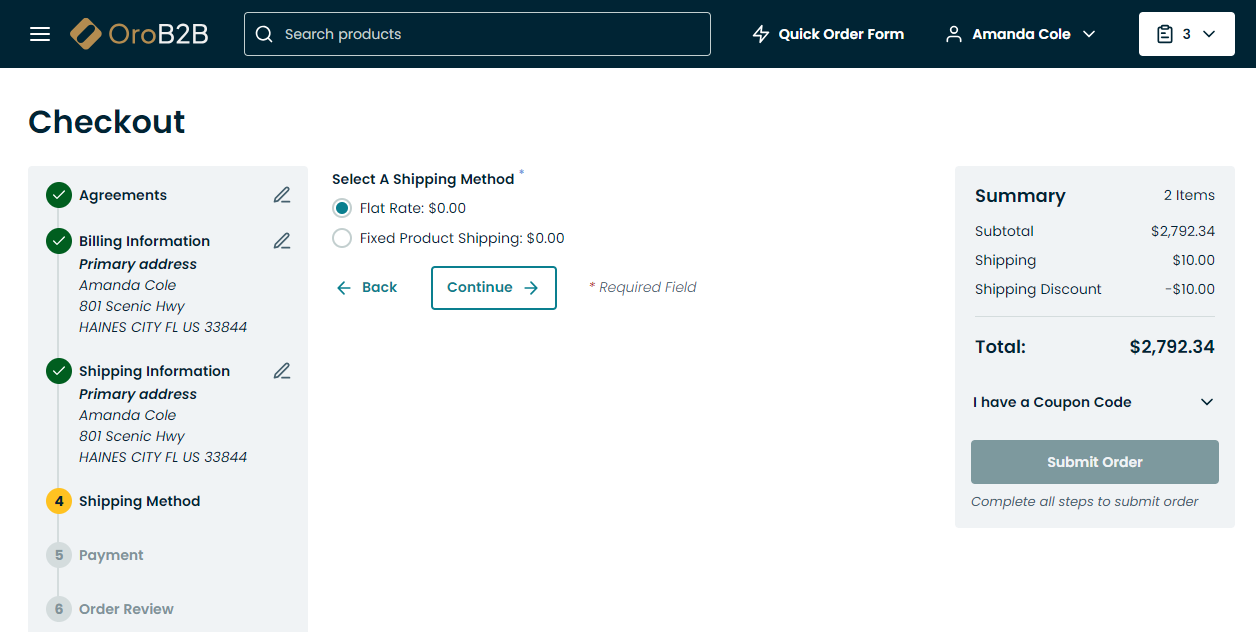
Step 5: Payment
Choose a suitable payment method by selecting it from the list of all available methods.
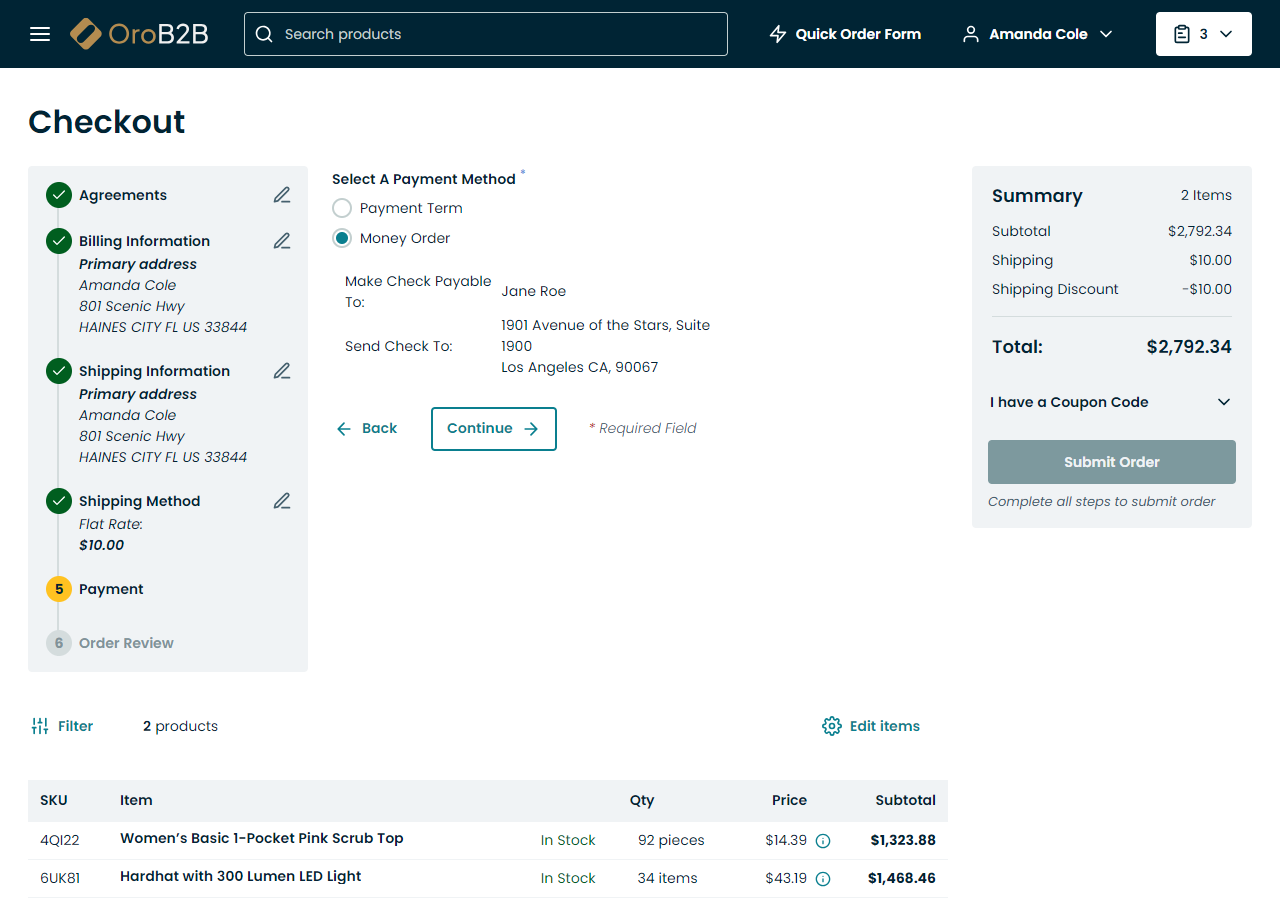
Step 6: Order Review
Once all the necessary information has been provided, you can review the order at the Order Review step:
View Options for the order:
Do not ship later than
PO Number
Notes
Delete the shopping list
Check quantity, price, subtotal, shipping and total cost
Edit the Order
Edit the already provided information by clicking on the left side of the page
To submit the order, click Submit Order.
Once submitted, the order will be received and dealt with by the sales team.
Business Tip
Explore our guide to discover how digital transformation in manufacturing improves operations, customer experiences, and increases sales.